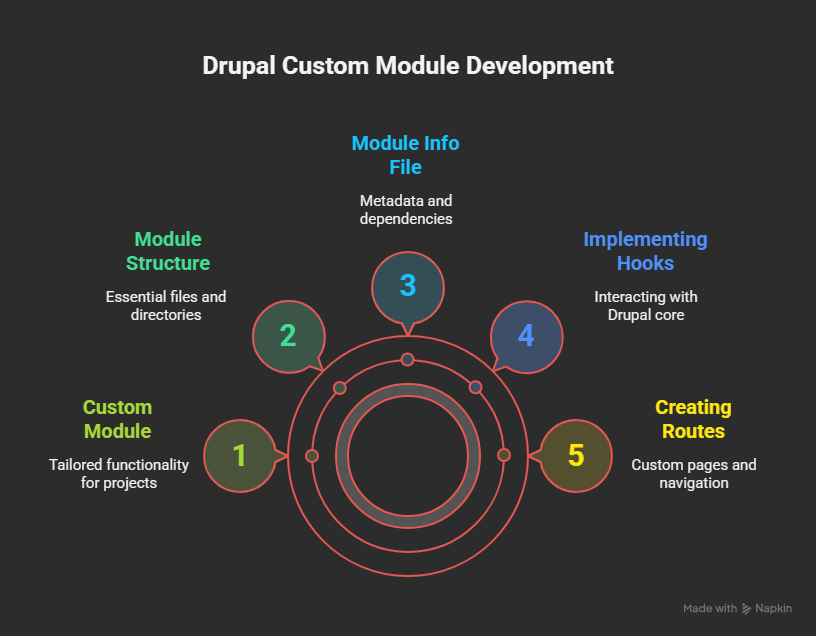Drupal is a powerful and flexible content management system (CMS) that allows developers to extend its functionality through custom modules. Creating a custom module in Drupal enables you to tailor the CMS to meet specific project requirements. This guide will walk you through the process of developing a custom module in Drupal from scratch.

Understanding Drupal Modules
Drupal modules are PHP-based components that extend the platform's core functionality. There are three types of modules in Drupal:
- Core Modules - Built-in modules that come with Drupal installation.
- Contributed Modules - Modules developed by the Drupal community and available for download.
- Custom Modules - Modules developed specifically for unique project requirements.
Steps to Create a Custom Module
1. Setting Up the Module Structure
Create a new directory for your module in modules/custom/ within your Drupal installation. Name the folder using machine-readable characters (e.g., custom_module).
Inside the folder, create the following essential files:
custom_module.info.yml– Module metadatacustom_module.module– Main PHP file for hookscustom_module.routing.yml– Defines routes (if needed)
2. Defining the Module Info File
Create the custom_module.info.yml file and add the following content:
name: 'Custom Module' type: module description: 'A custom module for extending Drupal functionality.' package: Custom core_version_requirement: ^9 || ^10 dependencies: []
3. Implementing Hooks
Drupal uses hooks to allow modules to interact with the core system. The custom_module.module file is where you define these hooks. For example, to alter the page title:
use Drupal\Core\Routing\RouteMatchInterface;function custom_module_preprocess_page(array &$variables, RouteMatchInterface $route_match) { $variables['title'] = t('Welcome to the Custom Module Page'); }
4. Creating Routes (Optional)
If your module requires custom pages, define routes in custom_module.routing.yml:
custom_module.example: path: '/custom-page' defaults: _controller: '\Drupal\custom_module\Controller\CustomController::content' _title: 'Custom Page' requirements: _permission: 'access content'
5. Enabling the Module
Enable your module via Drush or the Drupal admin panel:
drush en custom_module
or navigate to Extend in the Drupal admin UI and enable the module manually.
6. Debugging and Extending
- Use Drupal’s logging system (
Drupal::logger()) to debug. - Extend functionality by adding form handlers, services, or event subscribers as needed.
Conclusion
Creating custom modules in Drupal allows for flexibility and scalability in development. By following these steps, you can build powerful extensions tailored to your project's needs. Happy coding!

Comments
Nice
useful content
Add new comment